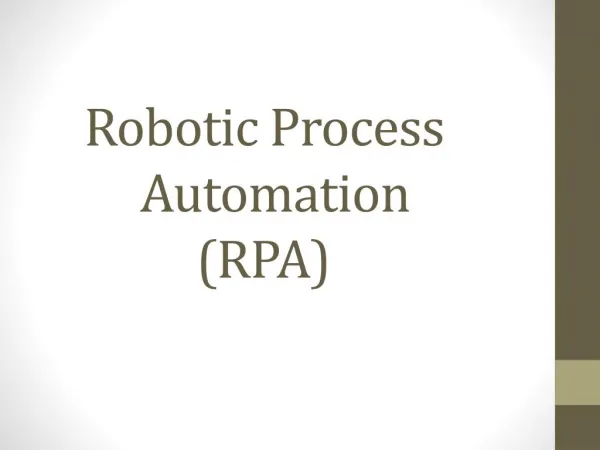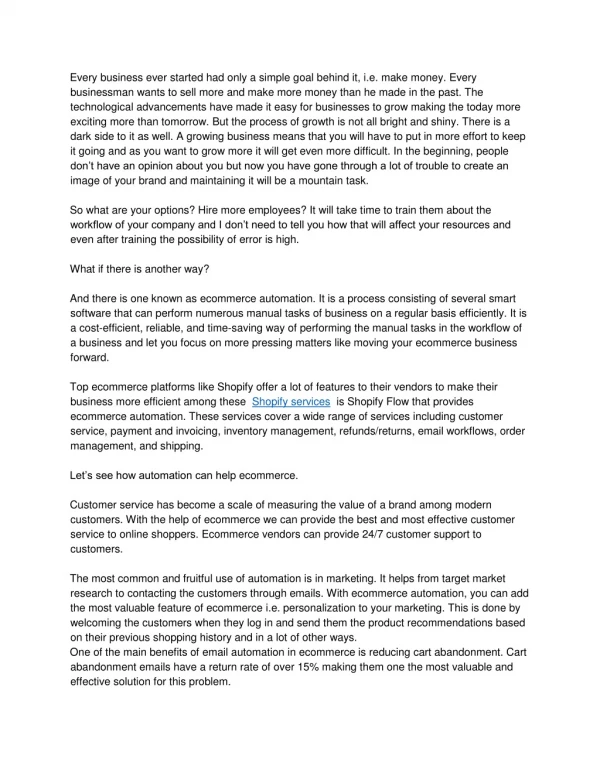What Is RPA Automation
0 likes | 10 Views
Robotic Process Automation (RPA) is a cutting-edge software technology designed for effortless creation, deployment, and administration of software robots.<br><br>Read this Article here: https://medium.com/@ciente/what-is-an-rpa-in-automation-cbc528997352<br><br>Learn more: https://ciente.io/blog/<br><br>Follow for more Articles here: https://ciente.io/
Download Presentation 

What Is RPA Automation
An Image/Link below is provided (as is) to download presentation
Download Policy: Content on the Website is provided to you AS IS for your information and personal use and may not be sold / licensed / shared on other websites without getting consent from its author.
Content is provided to you AS IS for your information and personal use only.
Download presentation by click this link.
While downloading, if for some reason you are not able to download a presentation, the publisher may have deleted the file from their server.
During download, if you can't get a presentation, the file might be deleted by the publisher.
E N D
Presentation Transcript
More Related






















